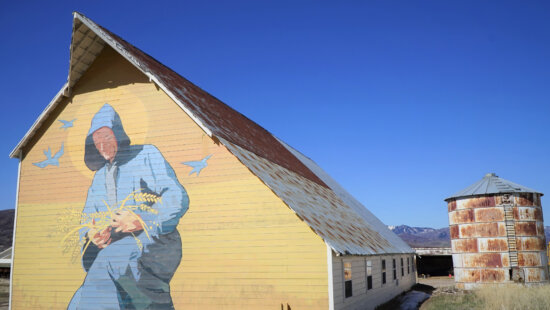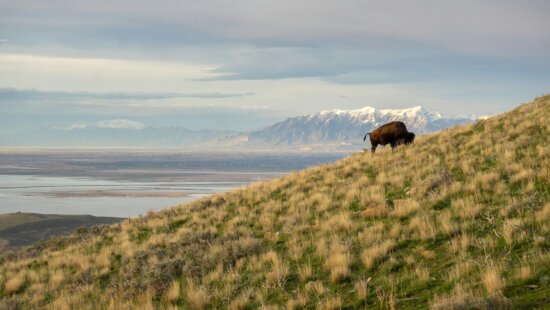Environment
As the Great Salt Lake shrinks, its carbon footprint grows, study finds

The shores of the Great Salt Lake near Antelope Island are pictured on Tuesday, May 21, 2024. Photo: Spenser Heaps for Utah News Dispatch
SALT LAKE CITY, Utah – Not only does the shrinking Great Salt Lake impact wildlife and expose Utahns to toxic dust, it’s also a major contributor to greenhouse gas emissions.
That’s according to new research from the Royal Ontario Museum, which published a study last week that found the dry lakebed emitted about 4.1 million tons of greenhouse gases in 2020 alone, most of it carbon dioxide.
By comparison, Utah as a whole emitted about 59 million tons of carbon dioxide in 2016, according to the University of Utah’s Kem C. Gardner Institute.
While burning fossil fuels is the largest contributor to human-caused greenhouse gas emissions, the largest terrestrial source — meaning it comes from the earth — is soil. A study published earlier this year in the Institute of Physics’ science journal found that about 80% of the world’s terrestrial carbon is stored in soil.
Drought causes soil to dry and crack, a process called desiccation, which can lead to increased respiration (the release of carbon dioxide). Cracking can also expose deeper and older stores of carbon dioxide in the soil.
That’s essentially the scenario researchers found on the Great Salt Lake — as the lake recedes and exposes more dry lakebed, desiccation increases. According to the study, the drying lake is equivalent to a roughly 7% increase in Utah’s total human-caused greenhouse gas emissions.
“Human-caused desiccation of Great Salt Lake is exposing huge areas of lake bed and releasing massive quantities of greenhouse gases into the atmosphere,” said researcher Soren Brothers. “The significance of lake desiccation as a driver of climate change needs to be addressed in greater detail and considered in climate change mitigation and watershed planning.”
Between April and November 2020, researchers measured carbon dioxide and methane emissions from exposed sediment on the Great Salt Lake, comparing the findings with the estimated release of greenhouse gases from the water. The measurements pointed to a release of about 4.1 million tons of greenhouse gases, 94% of it carbon dioxide.
The research also found that the carbon emissions are accelerated by warming temperatures, even at areas where the lakebed has been exposed for decades.
“These analyses showed that the original lake was not likely a significant source of greenhouse gasses to the atmosphere, making the dried-up lake bed a novel driver of atmospheric warming,” the study reads.
The lake hit its historic low point of 4,188.5 feet in November 2022. Since then, two above-average winters brought increased runoff to the lake, with levels as of Monday at about 4,193.7 feet in the south arm.
The north arm, which is typically lower and saltier due to the railroad causeway that restricts the flow of fresh water, is at about 4,192 feet.
The state defines a “healthy” range for the lake between 4,198 to 4,205 feet.




















